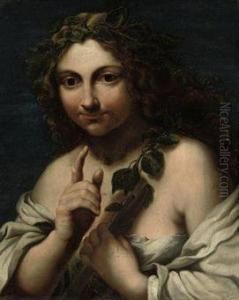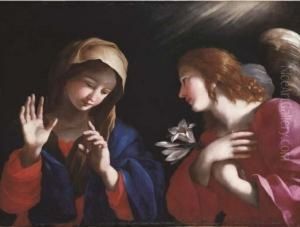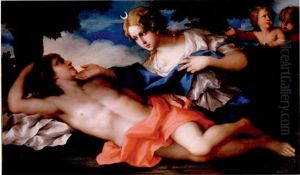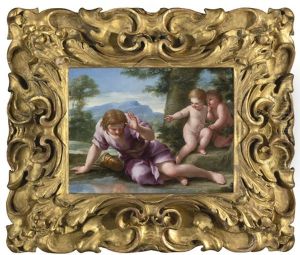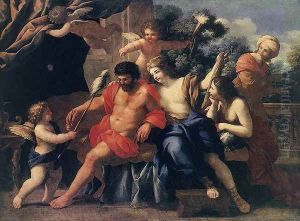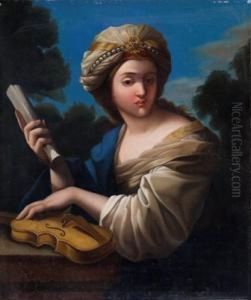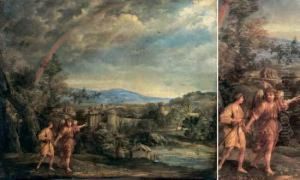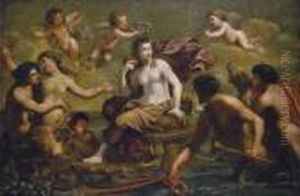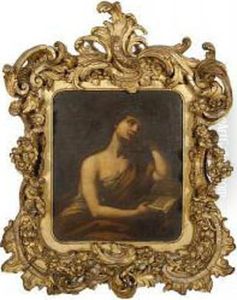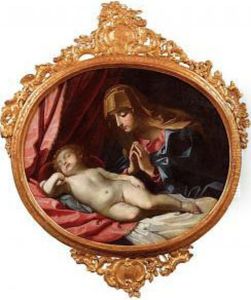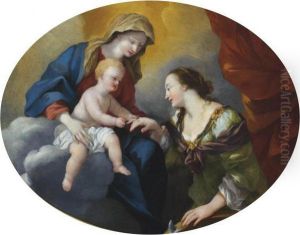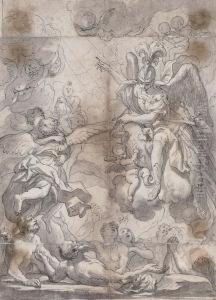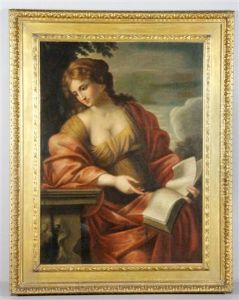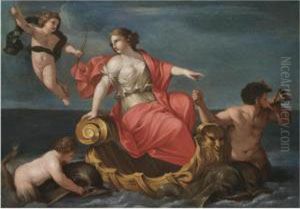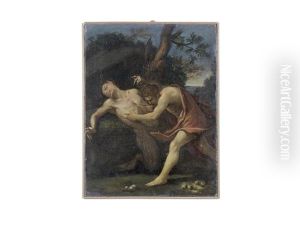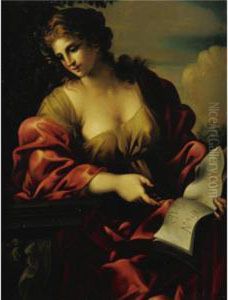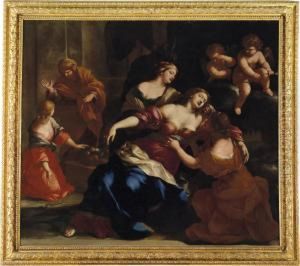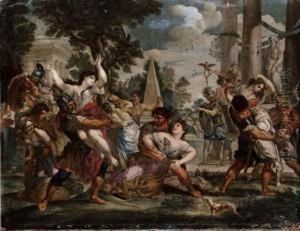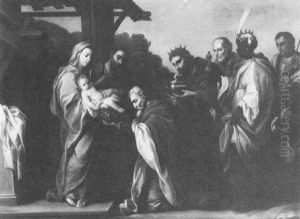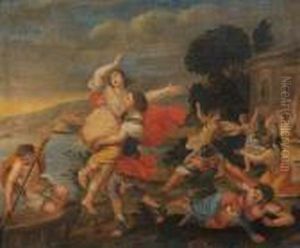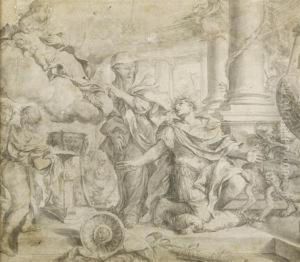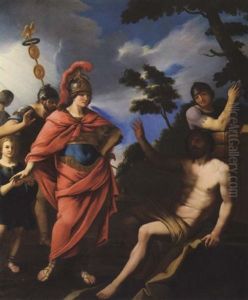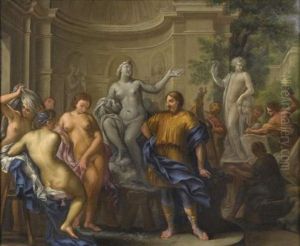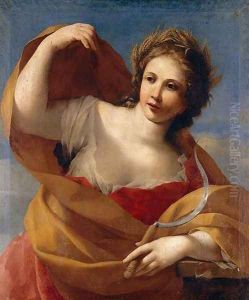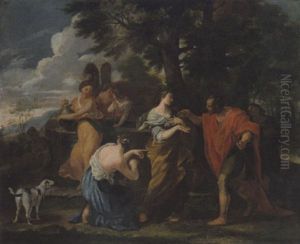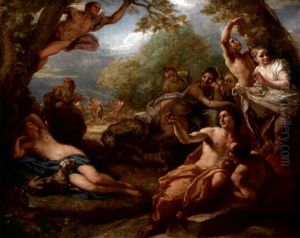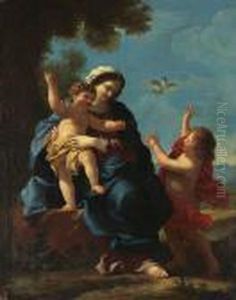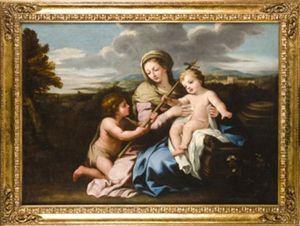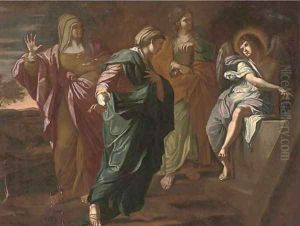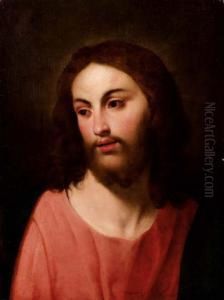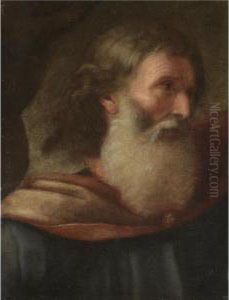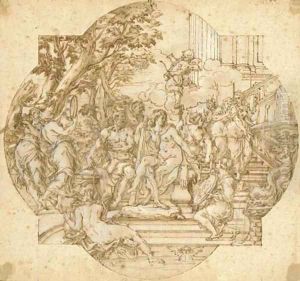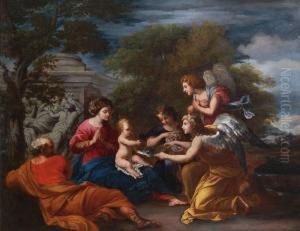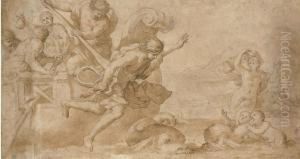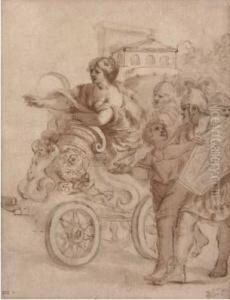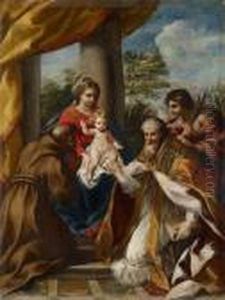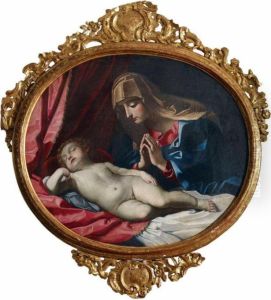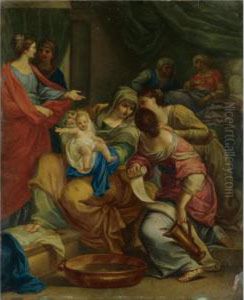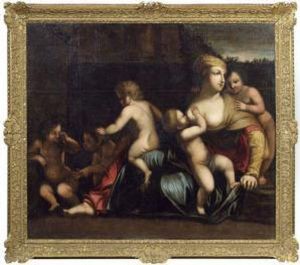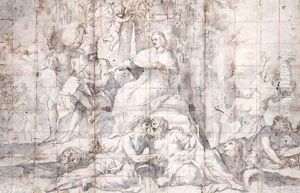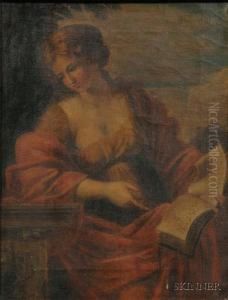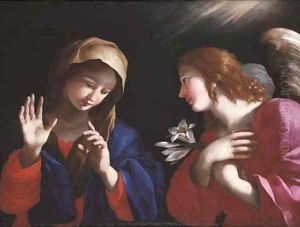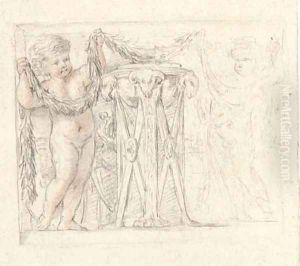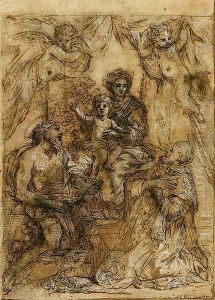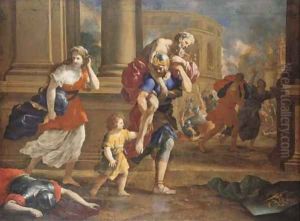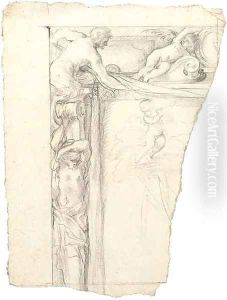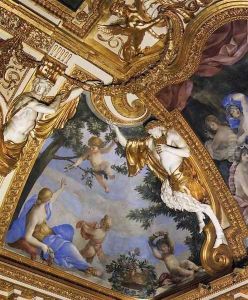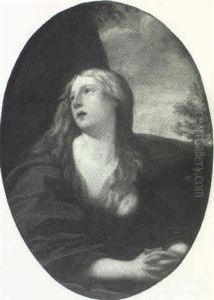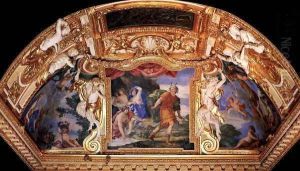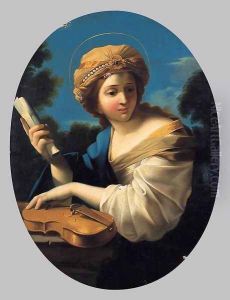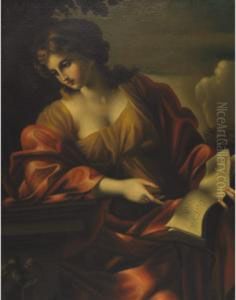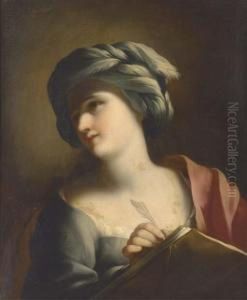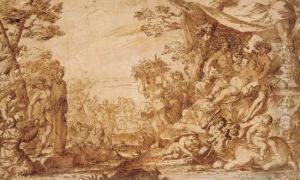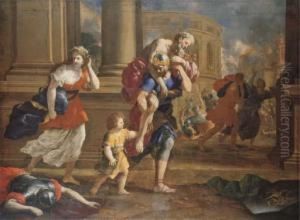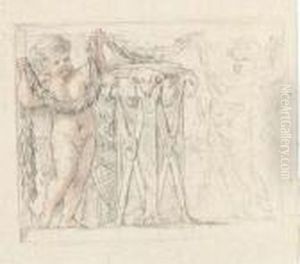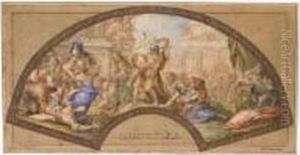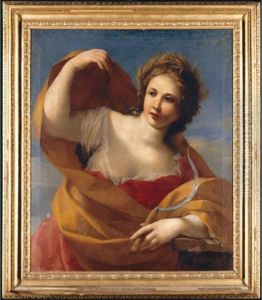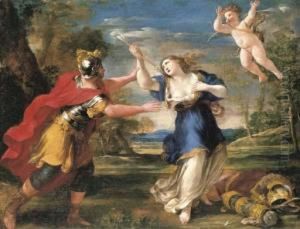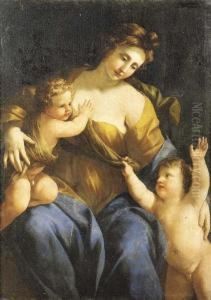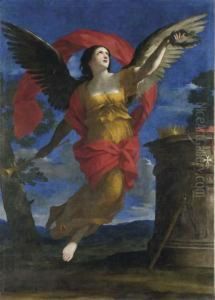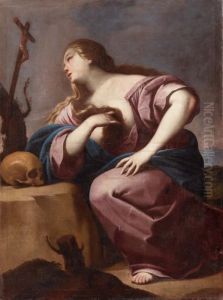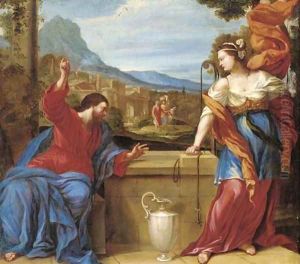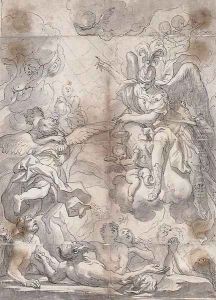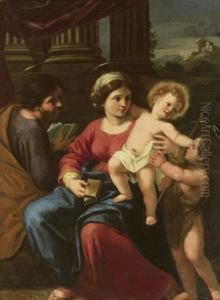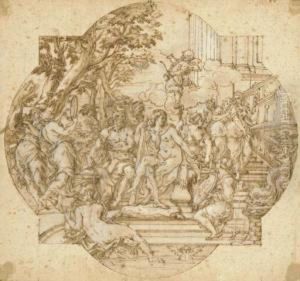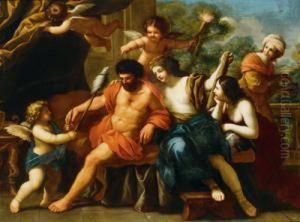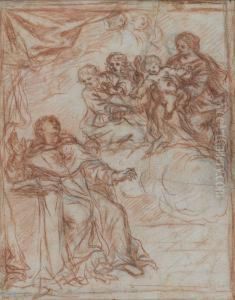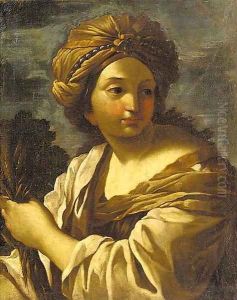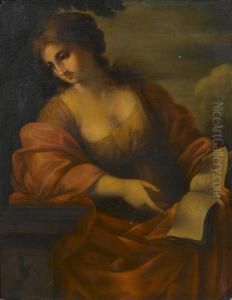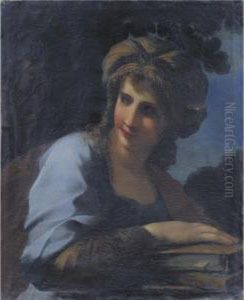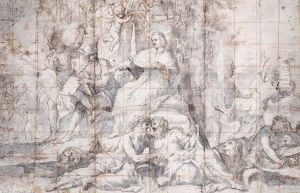Giovanni Francesco Romanelli Paintings
Giovanni Francesco Romanelli was a prominent Italian painter of the Baroque period, born in 1610 in Viterbo, a city in Lazio, Italy. He was a pupil of Pietro da Cortona, one of the leading painters of the Roman Baroque. Romanelli's style was significantly influenced by his mentor, yet he developed his own distinctive approach, characterized by a more classical and less ornate aesthetic compared to the prevailing Baroque style of his times.
Romanelli's career was marked by significant patronage from the Catholic Church and the nobility, which was a testament to his talent and the high regard in which he was held. He became one of the favored artists of the Barberini family, particularly under the patronage of Maffeo Barberini, who became Pope Urban VIII. His connection with the Barberini family opened up many opportunities for commissions in Rome, including work at the Vatican.
However, Romanelli's relationship with the Barberini family also meant that his fortunes were tied to theirs. With the death of Pope Urban VIII and the rise of Pope Innocent X, who was not a Barberini supporter, Romanelli's career in Rome suffered. Consequently, he found new patronage in France under Cardinal Mazarin, the chief minister to King Louis XIV. In France, Romanelli executed a number of commissions, including a series of paintings for the Piti Palace in Florence, and he became a significant figure in the French art scene of the time.
One of his notable works is the decoration of the gallery at the Palais du Luxembourg in Paris, which further cemented his reputation. Romanelli's work in France shows the influence of classical antiquity and the Italian Renaissance, with clear and harmonious compositions, and a less crowded interpretation of Baroque aesthetics. His frescoes and canvases often featured mythological and historical subjects, rendered with a focus on clarity and elegance.
Giovanni Francesco Romanelli passed away in 1662. His legacy is evident in the way he bridged the Italian Baroque and the more classical French style that was to emerge prominently in the late 17th century. His work continues to be studied for its contribution to the transition in European art from the high drama of the Baroque to the more restrained classicism that followed.
